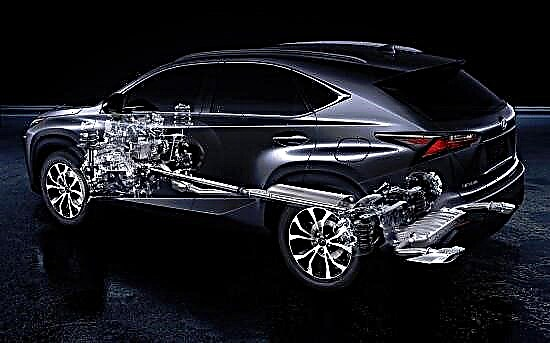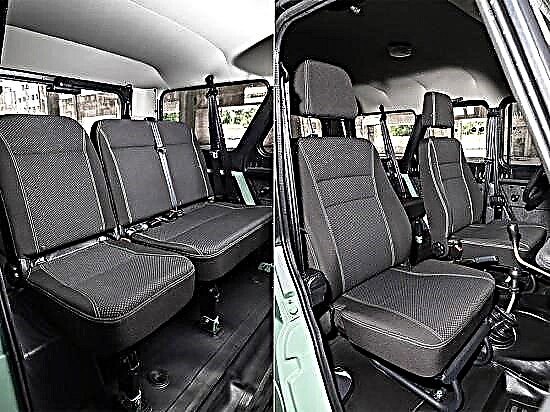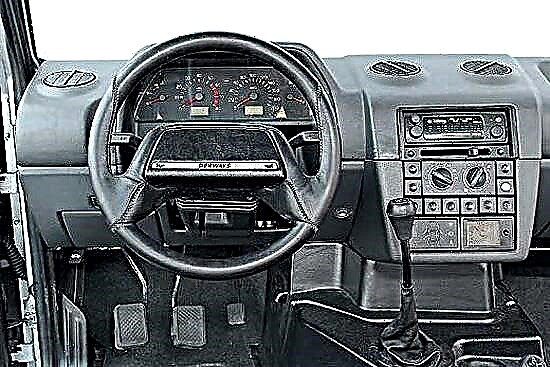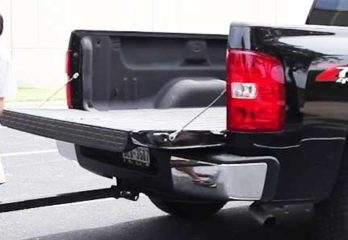Ratings of cars and auto products
Reviews, comparisons & tips for motorists
To protect the paint of the car body from all kinds of damage, until recently such an affordable and simple material as wax was used. Its only drawback is its short service life, so it often required updates.
Opti CoatPro
As an alternative, another coating for cars appeared on the market not so long ago - ceramic, which has already gained popularity and received a lot of negative reviews. Let's try to figure out what are the pros and cons of ceramics for a car.
What is nanoceramics
A modern ceramic coating on any car is a so-called nanomaterial, the particle size of which is no more than 100 nm. The technology of obtaining was discovered not yesterday, but back in 1980, and it was being improved all the time.
A ceramic particle with such nano-sizes has properties that are not at all the same as a substance of the usual kind. And the prefix nano itself in the word has to do not with the thickness of the layer applied to the paint, but with the structure of each particle. Such a mistake is made quite often when describing this means of protecting the painting of a car.
If we talk about the real thickness, then in practice it will be 100 times greater than the layer that is obtained by applying only wax. And if the ceramics we are used to is a very fragile substance and breaks with any careless handling, then nanoceramics is a super-strong coating with high elasticity.
What does the ceramic coating consist of?
The ceramic coating available today comes from a variety of manufacturers. For this reason, the composition of this substance may differ slightly. True, these differences will be insignificant and will not be able to somehow affect the positive or negative properties of the substance.
Nobody indicates the exact formula of this composition. As a rule, these are solvents or diluents in different concentrations, silicon dioxide or titanium dioxide, sometimes silicon carbide is taken as a base.
If the ceramics are from a well-known manufacturer, then no polymer is required to bind the main components in it.
What is the best component to choose:
- Silicon dioxide is the main component of sand. It is he who is the best in the price-quality ratio, a good hydrophilic coating is obtained from it, and for these reasons nanoceramics are most often made on its basis. Moreover, this substance in the mixture must be at least 50%.
- Titanium dioxide gives the coating increased strength and excellent UV resistance.
- Silicon carbide is rare in nature. It is used as a synthetic diamond. Found in the only ceramic coating from OPTI-COAT.
But before applying this modern coating on top of paint to your car, it is imperative to understand what the pros and cons of this substance, and in what cases it is best to use it.
What are the advantages of ceramic coating
The ceramic coating of the car has its undoubted advantages, however, there are many disadvantages as well. But let's start on the positive side.
The first is good protection against ultraviolet radiation and oxidation. This is especially true for the southern regions. Under the influence of this unfavorable factor, any paint, even the highest quality, will fade and fade over time.
The second is protection against the effects of all chemicals, even the most caustic ones, for example, gasoline, oil, acids, as well as precipitation. All of them do not affect the coverage in any way, which means you can be calm for your car.
The third is an excellent water-repellent property. Even when washing the car, you can see how water droplets literally roll off it. And the dirt itself does not stick to the treated surface due to its smoothness.
Fourth - beautiful shine of paint and deep glossy reflection, which makes the car noticeable on the road.
Fifth - resistance to minor scratches and damage. It is not as easy to scratch ceramics as ordinary paint applied to the body of a car without protection.
Sixth, the duration of protection is 5 years. That is how much you do not have to think about the fact that the car body needs to be covered with something to protect it from adverse factors.
Everglass
Seventh - excellent protection of metal against corrosion. During coating, the solution penetrates literally all cracks and cracks and remains there, not allowing water or salts to accumulate here. All the tests that were aimed at identifying this particular indicator, the ceramics passed perfectly well.
Eighth - even the most stubborn dirt will be easier to wash from the machine. This applies to bird droppings or tree resin. It is them that drivers are afraid of, and it takes a lot of time and effort to remove these stains. With a ceramic coating, this problem can simply be forgotten.
Ninth - strong resistance to any graffiti and other drawings that intruders can put on the car body. The applied paint can be easily removed without any damage to the paintwork.
Tenth - the ceramic body coating works at all temperatures, but it is especially recommended where the car is constantly under the scorching rays of the sun and remains unprotected.
We have analyzed what a modern ceramic coating gives to any car, both domestic and foreign. But it turns out that not everything is as rosy as it might seem at first glance. To complete the picture, it is imperative to consider the negative aspects. And they are.
Cons of ceramics
Before choosing the right protective coating for a car, it is advisable to clarify whether the proposed options have any negative sides.
First, ceramics, which are applied to the scratched body, are not able to hide this imperfection. The scratches will not go anywhere, but will only be covered up, and it will simply not be possible to eliminate them for a long time. Therefore, the ideal option for application is a new car from the passenger compartment without any visible damage to the paint.
Second, do not rely too much on the fact that nothing can scratch the car body. If you apply at least minimal effort, the car body can be damaged. The same can happen if the car is washed incorrectly or during an accident. Therefore, under extreme operating conditions of the machine, it is better to choose something more reliable.
Third, after rain or driving through puddles, the car needs to be washed. The fact is that ceramics can eliminate the accumulation of water on the surface, but no one guarantees that dirty spots can disappear on their own. Car care is not ruled out.
Fourth, you will have to wash your car with the same regularity as before. The only difference is that it will take less time and effort, and you will not have to wax the car after washing. And this is rather a plus, not a minus.
Fifth, only a professional should apply a protective ceramic car coating. When self-applied, there is a high risk of making a lot of mistakes, because of which the machine will not receive the desired protection.
But it turns out that this popular coating for the body of any car has a major drawback. The fact is that it is impossible to get rid of scratches that have already been applied to the ceramics.
No polish or varnish will help here. The only way out is to remove the coating and reapply it. It will not be so easy to do this, and most importantly, it will not be free. Therefore, before applying the first layer of this nano-substance, you need to think carefully.
How does the ceramic coating bond to the paintwork?
In advertising ceramics, as a protective coating for the body of any car, there is information that this substance combines with the paintwork through a strong chemical reaction.
In fact, everything is a little different. The only reason ceramic stays in place is the mechanical bond between two different structures. Nanoceramics have particles of a minimum size, which easily penetrate into all irregularities and even pores of the paint, and after complete drying they literally adhere to the main coating of the car body. We can say that ceramics becomes part of the paintwork of the machine, its top layer. But no chemical reaction occurs with such a compound.
Ceramic Pro 9h
Application procedure
Before you start covering your car with ceramics, it must be thoroughly washed and must be treated with cleaning clay. The wax that was applied before must be completely removed.
Before starting work, the car body requires polishing. It is better to use a special abrasive paste. This is necessary to smooth out any existing bumps and scratches. You won't be able to do this later.
Every part of the body needs to be purged. This will help get rid of water that may accumulate in certain areas of the machine. After carrying out these procedures, the body needs to be cleaned with isopropyl alcohol using microfiber.
And only after that the ceramic composition is applied. The procedure is carried out only indoors and at temperatures from +10 to +30 degrees. Stock up with several pairs of gloves before applying.
Ceramics in stores are sold in packages that include everything that may be required during the application procedure. But before you start doing the work, you need to read the instructions, since products from different manufacturers may differ in the method of overlaying.
The microfiber included in the kit should be wrapped around the applicator and applied to the fabric with a few drops of the composition. The ceramics must be applied first horizontally, and then vertically.
Ceramic coating for a car is carried out in several stages. After application, you need to wait 3 minutes, and after that, with the help of another microfiber, smooth the applied liquid and remove the residues. This should be done with a little pressure, but not with the maximum possible effort.
After applying the first coat, wait at least 2 hours before applying a new coat. In total, the car needs to be applied from 3 to 5 coats, depending on what kind of protection you want to get.
If you plan to process the entire machine, then this must be done sequentially:
- First the hood.
- After the roof.
- Then the trunk lid.
- Bumper.
- Sides and doors.
- Side mirrors.
The ideal application is to divide the area into pieces measuring 60 by 60 centimeters. In order for the coating to harden as quickly as possible, it is best to use an infrared light source with a temperature of 130 degrees for drying.
After applying the ceramic coating to the car body, it must not be used for a day, and it is not recommended to expose it to water for a week. This is how much time must pass for the ceramics to dry completely.
Opti CoatPro
Correct care
The machine can be washed and cleaned only at non-contact car washes. Use only high quality and certified cosmetics for the car.
After applying the coating, do not touch the coating with your hands or any objects for 3 hours. It is better not to operate the machine until it is completely dry. After processing for a week, do not go on the road during snow, rain, fog and other adverse weather events.
Throughout the entire period of operation, you cannot use untested and not recommended shampoos for car washing, or use too aggressive auto chemicals.
During the entire period of operation, do not wipe the car body with coarse rags or rags, use sand or other abrasive substances to clean the hood or trunk lid.
Do not allow re-polishing of an already applied coating. This will lead to the fact that the protective layer will be completely destroyed. Do not wash the car in direct sunlight or pour cold water on a hot car - a sharp thermal deformation of the metal can damage the protective layer.
Life time
The service life of ceramics applied to the car body depends on many indicators. Many service centers provide a one or even two year warranty, so it is best to apply the coating there.
The service life of good ceramics for cars is 5 years. However, this does not apply to the cheap Chinese version or fakes - there will be no trace of such a coating after 4 months.
Manufacturer's choice
Before choosing one or another product, it is imperative to find out as much as possible about the manufacturer. The following brands are considered the most popular and high-quality:
- Opti CoatPro (USA) is one of the highest quality products that will help to protect the paintwork from damage and scratches for a long time.
- CeramicPro H9 (Japan) - lasts up to 3 years, is a leader in its segment, however, you cannot buy it in a regular car shop - it is sold only in dealerships.
- Everglass (Russia) - perfectly copes with liquids that get on the car body and does not allow metal corrosion to develop.
Ceramic-based body protection products are sold in different containers - it can be 30 ml, or maybe a liter. The cost will depend on both the manufacturer and the quality, but most often it starts around 5 thousand and ends in 20 thousand rubles.











